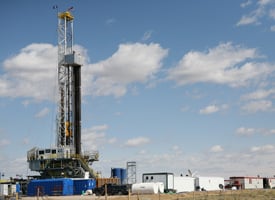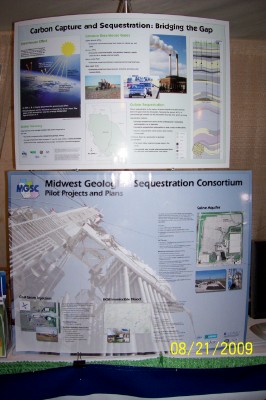OK so Mom wins but let me very quickly qualify that I love my Mother and I mean that unconditionally. My Mom is a rightwing fundamentalist Christian. So really what I am saying is that I hate the ideology more than my mother. I am not talking about the social agenda either or most of it anyway. I am pro abortion. I think everyone should have one. I am pro civil rights which means I am for samesex sexuality. I think everyone has tried just one. I am for universal health care.
I am more talking about her pro corporate business, pro rich, pro military, deregulation, anti union and anti evolution stances. Mom things that rich people and powerful people are the best. She got this from Eureka College where Ronald Reagan was big man on campus:
http://www.hindu.com/2009/07/07/stories/2009070750300200.htm
Budget pro-rich, says TDP Special Correspondent
| ‘No solution shown for unemployment and agricultural crisis’ |
Budget failed to specify how 1.20 crore jobs would be generated’
‘Promoting disinvestment in PSUs amounts to encouraging privatisation’
KADAPA: The Union budget is pro-rich and not oriented towards poverty alleviation and ignored the cause of the middle classes, Telugu Desam Party leaders alleged.
The budget failed to specify how 1.20 crore jobs would be generated, TDP State Secretary V.S. Ameer Babu, TNTUC president S.A. Sattar and party leaders S. Goverdhan Reddy and J. Rayappa Raju said in a statement. They deplored the government’s contention that it would attract foreign direct investment when there was global economic recession and did not specify how it would clear the foreign debt and interest.
The budget did not show any solution to unemployment, agricultural crisis and suicides. There was no mention of unearthing the black money of Rs. 1 lakh crore, they alleged. Inflation grew from 2.8 per cent last year to 6.7 per cent this year. The Bill passed for unorganised workers was confined to paper.
Promoting disinvestment in public sector units amounts to encouraging privatisation, the TDP leaders alleged.
Steps were not taken to curtail the increase in petrol and diesel prices. The budget made no mention of the lakhs of workers who lost jobs in IT industry, they said.
The TDP is opposing the budget, they asserted
‘Highly disappointing’ Tirupati Correspondent adds: Federation of the Farmers’ Association and various other farmers organisations have termed the general budget introduced today as highly disappointing from the farmers point of view.
:}
Which I think should clash with her Christian values. Lets face it, the rich just want more money at the expense of not just the poor but the environment. As long as they believe that their money can buy them clean water and clean air – even if it has to come in a bottle – well then the heck with the rest of us.
http://a4a.mahost.org/fakes.html
DON’T BE FOOLED!
Only after the last tree has been cut down,
only after the last river has been poisoned,
only after the last fish has been caught,
only then will you realize that money cannot be eaten.
–The Cree People
Big Business is terrified of the environmental movement, which remains the single most popular left-wing movement in the US. The dirty secret of Big Business is that it is principally responsible for pollution and environmental degradation around the world. The majority of Americans
want a safer, cleaner environment. They know that, and have taken extensive countermeasures to protect themselves from the people at large, including pouring money into bogus environmental groups designed to further industry causes while
appearing to be environmentally conscious. They also launch massive PR campaigns to paint themselves green.These anti-environmental initiatives are, in essence, efforts to
thwart democracy.It’s important to note that the only
green behind these efforts is money, not concern for the environment. These groups are very well-financed, backed, as they are, by corporations and other capitalist interests. What they lack in public support, they make up for in resources and powerful connections.Going over the list, you can see the copious use of buzzwords by the anti-environmental movement, as they strive to create the
appearance of a broad mandate and public support. However, these groups are funded and controlled by economic and political
elites, with a vested (financial) interest in thwarting and reversing environmental reforms.The following is excerpted from
The Greenpeace Guide to Anti-Environmental Organizations, put out by the excellent Odonian Press, Box 32375, Tucson, AZ 85751, and is part of their Real Story series
TACTICS
-
Greenwashing: When a company adopts marketing strategies whereby the company appears to be adopting a more environmentally-conscious stance, when really it’s simply doing its usual routine.
Examples:
-
Mobil Chemical added a small amount of starch to the plastic in Hefty trash bags and called them “biodegradable” (however, the bags would not degrade if buried in landfills, but only if left out in the sun; moreover, the bags didn’t degrade, but rather broke up into smaller plastic pieces — not the same thing!) A Mobil Chemical pitch man said, “degradability is just a marketing tool. We’re talking out of both sides of our mouth because we want to sell our bags.”
-
Coors Brewing sponsors a greenwashing campaign called Pure Water 2000 that funds “grassroots organizations [engaged in] river cleanups, water habitat improvements, water quality monitoring, wetland protection, and pollution prevention.” In 1992, however, Coors pleaded guilty to charges that it had dumped carcinogenic chemicals into a local waterway for 18 years!
-
Astroturf organizing: These are industry-funded organizations meant to function like environment grassroots groups, except that they are heavily financed by industry and seek to manipulate public opinion by distorting facts. They seek to put environmentalists in an unfavorable light by launching personal attacks against them, charging that activists are “anti-family,” “anti-American,” and pitting jobs and the economy against environmental reform. They are termed “astroturf” because they are designed to look like they are genuine grassroots movements.
-
Physical violence: Activists are routinely harassed by the FBI, which considers any progressive movements “terrorist” in nature, justifying surveillance, break-ins, arrests, and worse. Activists find themselves the victims of assaults, sabotage, death threats, and worse.
Examples:
- 1990: Earth First! activists Judi Bari and Darryl Cherney were nearly killed by a car bomb — incredibly, the authorities arrested them and accused them of transporting a bomb, which was later thrown out for lack of evidence. The actual perpetrators were never apprehended.
- 1992: Activist Stephanie McGuire of Florida was assaulted by three men for opposing a Procter & Gamble pulp mill’s practice of dumping toxins into the Fenholloway River (this mill still does this, btw). They beat her, burned her with a lit cigar, and cut her with a straight razor, while saying “now you have something to sue us over.” No one was arrested in this crime.
- The Center for Investigative Reporting noted 104 violent attacks on environmentalists from January 1989 to January 1993, averaging one every two weeks.
-
Government involvement: Through official government channels, whether Congress or the courts or the Executive Branch, government has been shown to regularly side with Big Business where environmental issues are concerned. The conservative 104th Congress recently showed this in its efforts to weaken endangered species laws, open up wetlands and parklands for economic exploitation, and lessening clean air, food, and water legislation. They also cut the funding for the EPA to the bone, all of which pleased industry greatly!
SIX TYPES OF ANTI-ENVIRONMENTAL GROUPS
Most industries will rely on a combination of the following to undermine and roll back environmental reforms, lavishly spending money on campaigns to secure their financial gain at our expense!
- Public relations firms
- Corporate front groups
- Think tanks
- Legal foundations
- Endowments and charities
- Wise Use and Share groups
Of these, the misnamed “Wise Use” and “Share” groups need the most explanation. This anti-environmental movement is mostly a western phenomenon where timber, mining, ranching, chemical, and recreation companies banded together to fight the environmental movement. Ron Arnold, the movement’s founder, is a self-described reformed environmentalist, one who has “seen the light”. As he puts it: “We want to be able to exploit the environment for private gain, absolutely.”
Makes you wonder what kind of environmentalist he must have been, with an attitude like that!
“Wise Use” and “Share” (Canadian version of “Wise Use”) act basically as stormtroopers for industry, because, according to Arnold, the “Wise Use” movement can “do things the industry can’t. It can stress the sanctity of the family, the virtue of the close-knit community. And it can turn the public against your enemies.”
Wiseguys are recruited from the ranks of workers at company meetings (typically compulsory meetings, by the way), and through door-to-door canvassers claiming environmentalists are responsible for unemployment.
Here you see a classic tactic of capitalists, turning the working class against itself when they should be fighting their common enemies, the capitalists themselves! News flash, folks — capitalists cause unemployment, environmentalists don’t!
What the wiseguys want was hammered out in their 1988 conference in Reno, Nevada, where they created a 25 point platform cementing their goal to destroy the environmental movement. Below are eight of their “lofty” goals:
- “immediate development of the petroleum resources of the Arctic National Wildlife Refuge in Alaska”
- opening “all public lands, including wilderness areas and national parks” to mineral and energy exploitation and to recreational vehicles
- exempting from the Endangered Species Act any species whose protection would interfere with resource exploitation (buzzword for “capitalist profit”, I’d say)
- opening 70 million acres of wilderness that is currently protected by the Wilderness Act to commercial exploitation
- logging 3.4 million acres of the Tongass National Forest in Alaska
- making enviromentalists pay industry back if they lose cases in court, as well as to pay for lost industry profits (this is the classic “big guy” versus “little guy” tactic, where the industry hopes to scare off potential suits because they know that while they have the money to fight a successful court battle, environmentalists don’t — it’s not unlike a wealthy incumbent’s campaign war chest scaring off would-be challengers)
- giving anti-environmental groups the right to sue environmentalists on behalf of the industry (this is a real gem, where industry uses these goons as dupes to do their dirty work, while the industry keeps its nose clean — ever the capitalist way!)
- implementing free-trade agreements (e.g., NAFTA and GATT) that will grant US industry access to natural resources (e.g., raw materials) globally
Looking at these, one wonders where the “Wise Use” comes in! Far from being populists, these wiseguys are snugly in the vest pockets of their capitalist employers. They are what you’d call “ruling class heroes,” I suppose, making the world safe for wealth, power, and privilege — and they even get paid for their effort!
ANTI-ENVIRONMENTAL GROUPS
:}
More on this later but suffice it to say that couching all of the above in a religious certainty and finding proof of that in the Bible is just plain wrong. In fact it is what all the polluters want to happen. Ready made stooges.
:}
:}






 WHALE SKIN: Pilot whales also ooze a gelatinous mix of enzymes from their skin, which deters barnacles and other sea parasites from attaching. (Photo: Scubaben/Flickr)
WHALE SKIN: Pilot whales also ooze a gelatinous mix of enzymes from their skin, which deters barnacles and other sea parasites from attaching. (Photo: Scubaben/Flickr)








 Taylorville Energy Center (TEC) is a proposed 500- to 525-megawatt clean coal power plant using an advanced technology called Hybrid Integrated Gasification Combined-Cycle (
Taylorville Energy Center (TEC) is a proposed 500- to 525-megawatt clean coal power plant using an advanced technology called Hybrid Integrated Gasification Combined-Cycle (